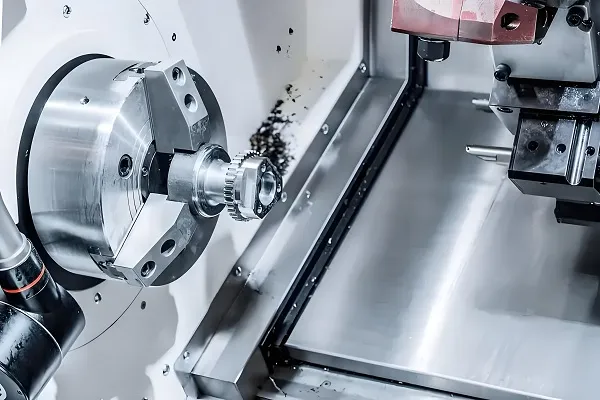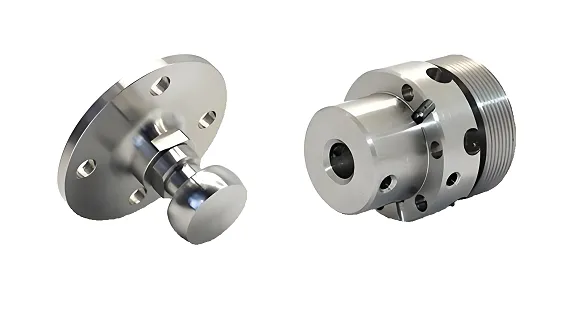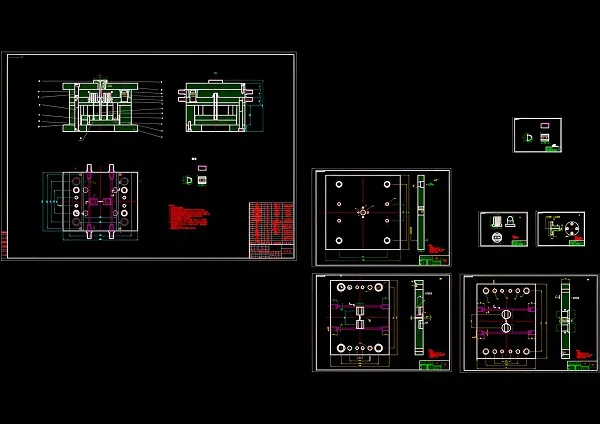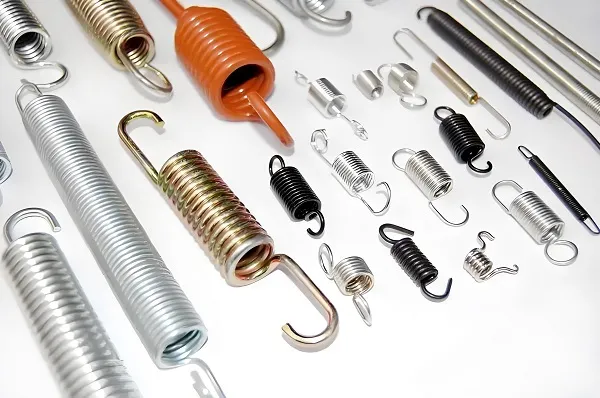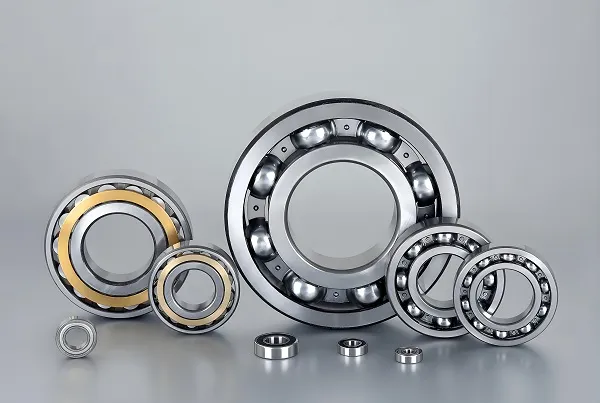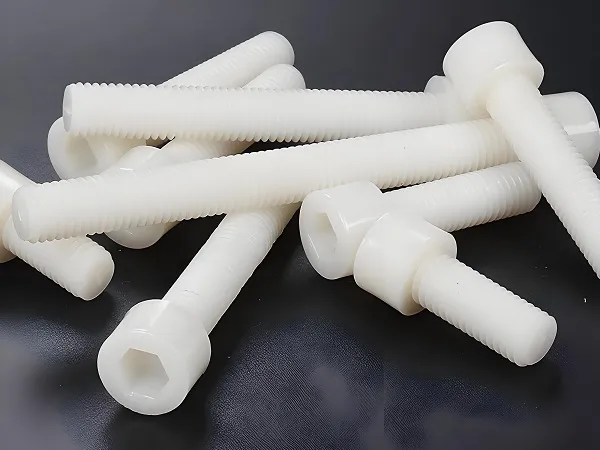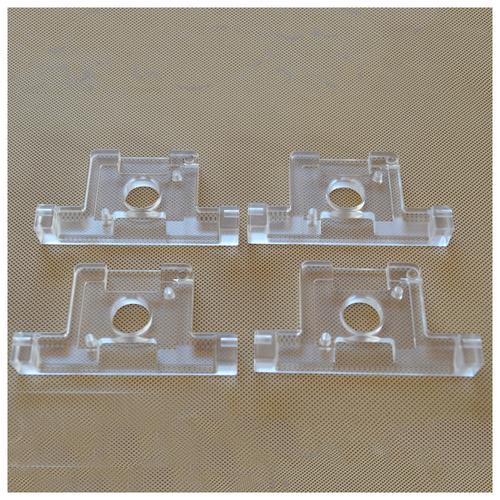
|
Advantage
|
Challenge
|
|
Low cutting force (1/5 of aluminum)
|
Risk of melting from frictional heat
|
|
High machinability (fast feed rates)
|
Easy chipping at hole entry/exit
|
|
Transparent finish (no post-polish if done right)
|
Molten chips sticking to hole walls
|
2. Key Technologies for CNC Drilling Acrylic
A. Tool Selection: Sharpness & Low Friction Are Critical
|
Tool Feature
|
Acrylic-Optimized Design
|
Rationale
|
|
Tool Type
|
Single-flute spiral end mill > Double-flute drills > HSS tools
|
Single-flute design reduces contact area (less heat); wide flutes prevent molten chip buildup
|
|
Material
|
Solid carbide (WC-Co) with polished flutes > Uncoated HSS
|
Carbide maintains sharpness longer; polished flutes reduce friction (avoids melting)
|
|
Coating
|
Thin TiAlN (1-2μm) or uncoated (polished 刃口)
|
Thick coatings trap heat; thin TiAlN enhances wear resistance without heat retention
|
|
Point Angle
|
60°-90° (shallow angle) > 118° (metal drill angle)
|
Shallow angles reduce axial force (prevents chipping at hole exit)
|
|
Shank Type
|
Straight shank (φ≤10mm) with precision grinding (runout ≤0.002mm)
|
Low runout avoids uneven cutting (prevents cloudy holes)
|
B. Cutting Parameter Optimization: Avoid Heat Buildup
|
Tool Diameter (d)
|
Spindle Speed (S)
|
Feed Rate (F)
|
Cutting Speed (Vc)
|
Key Rationale
|
|
φ1-3mm
|
8000-12000r/min
|
150-250mm/min
|
25-113m/min
|
High speed minimizes cutting time; moderate feed avoids tool dwell (prevents melting)
|
|
φ3-6mm
|
6000-9000r/min
|
200-300mm/min
|
57-170m/min
|
Balance speed/feed to reduce friction; avoid <5000r/min (causes slow cutting & heat)
|
|
φ6-10mm
|
4000-7000r/min
|
250-350mm/min
|
75-219m/min
|
Lower speed for tool rigidity; higher feed to clear chips quickly
|
C. Cooling & Lubrication: No Liquids—Air-Cooling Is Key
|
Cooling Method
|
Application Scenario
|
Advantages
|
Implementation Tips
|
|
Compressed Air (5-8 bar)
|
All acrylic drilling (especially transparent)
|
No residue; cools chips/tool; clears debris
|
Position air nozzle 3-5mm from cutting zone (aim at tool flute)
|
|
Dry Cutting (No Air)
|
Thick acrylic (>10mm) with low precision
|
Simple setup
|
Reduce speed by 10% to compensate for lack of cooling
|
D. Chip Evacuation: Prevent Molten Buildup
- Peck Drilling (G83): For holes >3×diameter (e.g., φ4mm×15mm), use small peck increments (Q=2-3mm) to eject chips before they melt. Example code:
- Spiral Chip Clearance: Single-flute tools’ helical design lifts chips upward—pair with compressed air to blow chips away from the hole (avoid re-cutting molten debris).
- Post-Peck Pause: Add a 0.1-second dwell (G04 P100) after each peck to let air cool the tool before re-entering.
3. Practical Case: CNC Drilling Transparent Acrylic Sign
Step 1: Process Planning
- Pre-Drilling: Use φ2mm single-flute end mill to drill 1mm-deep pilot holes (reduces chipping at hole entry).
- Final Drilling: φ4mm single-flute carbide end mill (TiAlN-coated) with G83 peck cycle (Q=2mm).
- Deburring: Use φ5mm chamfer mill (15° edge) to drill 0.3mm-deep chamfers (removes sharp edges without scratching).
Step 2: Equipment & Tools
- Machine: Haas TM-1 3-axis milling center (max spindle speed 10,000r/min).
- Tools: T01 (φ2mm single-flute end mill), T02 (φ4mm single-flute end mill, TiAlN), T03 (φ5mm chamfer mill).
- Cooling: 7-bar compressed air (nozzle mounted to spindle).
Step 3: Programming Snippet (FANUC System)
Step 4: Quality Verification
- Chipping Check: Inspect hole edges with a 10× magnifier—no visible chipping (edge smoothness 0.05mm).
- Transparency Test: Hold sheet against light—no clouding or molten residue in holes.
- Surface Roughness: Ra=0.6μm (measured with contactless roughness tester, avoiding scratches).
4. Common Problems & Solutions for CNC Drilling Acrylic
1. Molten Residue on Tool/Hole Walls
- Cause: Low speed (dwell time >0.5s), insufficient air cooling, dull tool.
- Solution:
-
- Increase speed by 20% (e.g., from 6,000r/min to 7,200r/min for φ5mm).
-
- Upgrade air pressure to 8 bar (ensure nozzle is aimed directly at flutes).
-
- Replace tool if 刃口 has visible wear (polished edge becomes dull).
2. Chipping at Hole Entry/Exit
- Cause: No pilot hole, high axial force, tool point angle too steep (118°).
- Solution:
-
- Drill 0.5×d pilot holes (e.g., φ2mm for φ4mm final hole).
-
- Reduce feed rate by 15% (e.g., from 250mm/min to 212.5mm/min).
-
- Switch to 80° point angle tool (reduces force on acrylic edges).
3. Cloudy Holes (Loss of Transparency)
- Cause: Tool runout >0.003mm (uneven cutting), liquid coolant residue, high heat.
- Solution:
-
- Calibrate tool runout (use precision collet; max 0.002mm).
-
- Use only compressed air (no liquids—clean sheet with isopropyl alcohol if needed).
-
- Reduce speed by 10% if hole walls feel warm to the touch.
4. Tool Breakage (Small Diameter <3mm)
- Cause: Excessive speed (>12,000r/min), feed rate too high, workpiece vibration.
- Solution:
-
- Cap speed at 10,000r/min for φ2mm tools.
-
- Lower feed rate to 150-180mm/min.
-
- Use a vacuum chuck (instead of clamps) to secure thin acrylic (<3mm).
5. Q&A: High-Frequency Questions About CNC Drilling Acrylic
Q1: Can I use a standard twist drill for acrylic (instead of single-flute tools)?
- Short Answer: Only for low-precision parts (e.g., non-transparent brackets).
- Limitations: Twist drills have 2 flutes that trap molten chips; 118° point angles cause severe chipping.
- Alternative: If no single-flute tool is available, polish the twist drill’s flutes with 600-grit sandpaper (reduce friction) and use 50% higher speed than metal drilling.
Q2: How to drill deep holes in acrylic (depth >10×diameter, e.g., φ5mm×60mm)?
- Key Steps:
-
- Use a “stepped single-flute tool” (φ3mm→φ4mm→φ5mm) to reduce cutting force.
-
- Peck drill with Q=1.5mm (smaller increments to avoid heat buildup).
-
- Pause 0.2s after each peck (G04 P200) to cool the tool.
-
- Use a long-reach air nozzle (100mm length) to blow chips out of the deep hole.
Q3: How to avoid scratching transparent acrylic during drilling?
- Protective Measures:
-
- Cover the acrylic sheet with low-tack masking tape (remove after drilling—no residue).
-
- Set Z-safe height to ≥10mm (avoids tool dragging on the sheet).
-
- Use a vacuum chuck with a rubber gasket (no metal clamps that scratch edges).

